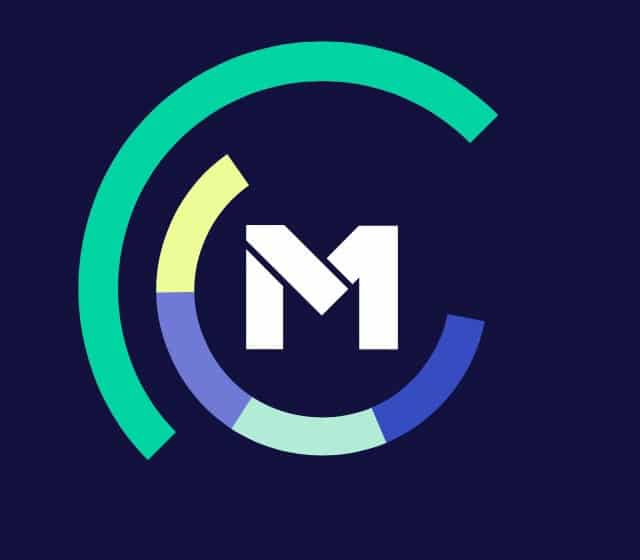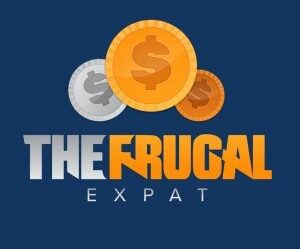When looking at different investments to create a well-balanced portfolio, it is hard not to look at ETFs to grow your wealth. Some of the best ETFs on the market, are those that track a simple index with a low expense ratio.
These ETFs can range from total market large-cap funds to the growth dividend funds that many dividend investors talk about.
There may be a wide variety of ETFs to choose from; in this article, let's discuss some of the best ETFs you can choose from.
What is a Mutual Fund?

A mutual fund is a type of investment that pools together money from many investors and uses that money to buy a diversified portfolio of stocks, bonds, or other securities.
Many of the mutual funds are managed by professional money managers, who, through lots of research, can select the best individual securities that make up the fund's portfolio.
One of the main benefits of mutual funds is that they offer investors the ability to diversify their portfolios across a wide range of stocks, bonds, or other securities. This can reduce risk by spreading out the investment across multiple assets.
They can even become sector-specific. Some may follow large-cap funds, while others could be made up of dividend aristocrats.
Mutual funds are just an easier way to build a more diversified portfolio.
What is an Index Fund?
An index fund is a type of mutual fund or exchange-traded fund (ETF) that tracks the performance of a particular market index, such as the S&P 500 or the NASDAQ.
Index funds are created to mirror or replicate the performance of the underlying index as closely as possible by holding a portfolio of stocks, bonds, and other securities that reflects the index's composition.
One of the main benefits of index funds is that they offer investors low-cost, diversified exposure to a specific market or asset class. It is for this reason that many people get into index funds.
The portfolio's low costs and passive management helps to create a portfolio that matches the market instead of many active managers trying to outperform the market.
In the book “A Random Walk Down Wallstreet,” Burton Malkiel says, “With $10,000 to invest at the start of 1977 would have a portfolio worth $2,143,500 at the start of 2022, assuming all dividends were reinvested. A second investor who instead purchased shares in the average actively managed mutual fund would have seen the investment grow to $1,477,033.”
That difference is over $666,467. You would make over half a million dollars by simplifying opting to invest in an index fund instead of an actively managed mutual fund.
Many brokerage companies have some great index funds to add to your portfolio. Fidelity index funds and Vanguard index funds are some of the best on the market.
Related: 9 Best Index Funds To Create Long-Term Wealth
What is an ETF?
ETFs have been a hot commodity over the last ten years and there is a reason for it. They create a more tax-efficient, more straightforward way to invest.
An exchange-traded fund (ETF) is a type of investment product that tracks the performance of a particular index, such as the S&P 500 or the NASDAQ.
ETFs are very similar to mutual funds because they offer investors a diversified portfolio for a specific market or asset class. However, unlike mutual funds, ETFs trade like individual stocks, which means they can be bought and sold throughout the day.
ETFs offer several benefits to investors. They are generally more cost-effective than mutual funds, as they have lower expense ratios and are not subject to sales charges.
They also offer greater tax efficiency and flexibility, as they are not required to distribute capital gains to investors like mutual funds are.
Related: ETF vs Mutual Fund: What’s The Difference?
What is This Expense Ratio?
Many people may wonder what the expense ratio of an underlying stock means. It is the cost for the brokerage company to create the fund and to pay for any expenses that may come up with the fund.
The great thing about index funds and ETFs that track them is the low expense ratios. The higher the expense ratio, the more money comes out of your pocket. So VTI, a popular ETF, has an expense ratio of 0.03%, which means it costs $3 for every $10,000 invested. ARKK, an actively managed ETF, has an expense ratio of 0.75%.
That means it costs $75 for every $10,000. In a down market, someone paying $3 is getting more for their money than someone paying $75.
Here Are 9 of the Best ETFs to Help Beginners Start Investing
Looking at many of the ETFs on the market, here is a selection of 9 great ETFs to help beginners get started.
1. Vanguard S&P 500 ETF (VOO)
Vanguard S&P 500 ETF (VOO) is an ETF that tracks the performance of the S&P 500 index, which is the 500 largest company on the U.S. stock market.
The fund provides broad exposure to the U.S. large-cap stocks and closely mirrors and replicates the S&P 500.
VOO has an expense ratio of 0.03%, which is relatively low compared to other ETFs. VOO is an excellent ETF to make a good base for your portfolio.
SPY, another S&P500, is a competitor of VOO, but with a higher expense ratio, it may be better to stick with VOO unless you want to do more trading.
Related: SPY vs VOO: Which is the Best S&P500 ETF
2. Vanguard Total Market Index Fund ETF (VTI)
VTI seeks to track the CRSP U.S. Total Market index. It allows investors to have a piece of every stock on the U.S. market. With a 0.03% expense ratio, VTI is an excellent low-cost ETF to create a solid base for your portfolio.
It is often compared to VOO but has much more diversification when it adds mid-cap and small-cap stocks to the portfolio. You are gaining more pieces to your pie when you are investing with VTI.
VTI is a fan favorite of many Bogleheads and FIRE people. It is a simple index fund that has everything. The only other things that need to be added are international stocks and bonds.
If you want to invest, VTI should be on your list of ETFs to start a good foundation for that portfolio.
3. Schwab U.S. Large-Cap Growth ETF (SCHG):
The Schwab U.S. Large-Cap Growth ETF (SCHG) is an exchange-traded fund (ETF) that invests in a diversified portfolio of large-cap U.S. stocks with solid growth prospects.
The fund tracks the Dow Jones U.S. Large-Cap Growth Total Stock Market Index, a market-capitalization-weighted index of large-cap U.S. stocks that are expected to have above-average growth.
SCHG has an expense ratio of 0.03%, which is relatively low compared to other ETFs. As of January 2022, the fund had total assets of over $30 billion and held stocks in various industries, including technology, healthcare, and consumer discretionary.
4. Investco QQQ Trust (QQQ)
Investco QQQ is a popular ETF that tracks the Nasdaq 100 index. It comprises 100 companies and makes it a great ETF for those looking for growth or even technology sector ETFs. Since it is composed of many information technology companies, many investors would like to look into this ETF to add more exposure to their portfolios.
Investing in QQQ can provide several potential benefits for investors, such as diversification with technology and growth companies, liquidity being a highly traded ETF, and low-cost offering of savings.
QQQ does have an expense ratio of 0.20%, but if you want a cheaper version go with QQQM, which is at 0.15% and holds the same portfolio.
QQQ is often compared with VGT for some of the best tech ETFs.
Related: VGT vs QQQ: What is the Best Tech ETF?
5. Schwab US Dividend Equity ETF (SCHD)
Schwab U.S. dividend growth ETF (SCHD) invests in a diversified portfolio of dividend growth-paying stocks. The fund tracks the Dow Jones U.S.
Dividend 100 Index is a market-capitalization-weighted index of U.S. stocks with a history of consistently paying dividends.
SCHD has an expense ratio of 0.06%, which is relatively low compared to other ETFs. It is considered a more value-weighted stock as the portfolio is full of well-established companies that pay dividends. Not many growth stocks in it like Microsoft (MSFT) or Apple (AAPL)
People may want to add SCHD to their portfolio because of their history of growth in dividends and performance. Over the last ten years, it has consistently grown its dividend by 12%, and its implementation averaged around 13%, which is better than the S&P500.
Many other dividend ETFs compete with SCHD, such as VYM, but the overall growth of dividends and performance makes SCHD a better ETF.
It is an excellent ETF for stability and income if you enjoy collecting dividends.
Related: 5 Reasons Why SCHD is the Best Dividend Growth ETF
6. Vanguard Total International Stock ETF (VXUS):
Vanguard Total International Stock ETF (VXUS) is an ETF that tracks the performance of the FTSE Global All Cap ex-US Index, which is a market-capitalization-weighted index of stocks in developed and emerging markets outside the United States.
VXUS is considered a good choice for investors who diversify their portfolios by adding international exposure. These companies can be Samsung, TSMC, Toyota, and Nestle. With over 7000 different stocks a part of this fund, you will have a lot of diversification. It also comes with a low expense ratio of 0.11%.
Many people will add VXUS to help diversify their portfolios. It is an excellent complement to either VOO or VTI in making a simple 3-fund portfolio.
Related: A 3-Fund Portfolio: A Simple Way to Invest
If U.S. stocks are down, there is always the possibility that global securities may be on the rise, so the added diversification can help you in downturns.
7. Vanguard Information Technology ETF (VGT):
Vanguard Information Technology ETF (VGT) is a technology ETF that tracks the performance of the MSCI US Investable Market Information Technology 25/50 Index.
VGT is considered a good choice for investors looking to gain exposure to the technology sector, as it offers a diversified portfolio of technology stocks and has a low expense ratio of 0.10%.
VGT offers excellent exposure to technology companies and is different from QQQ. There are over 350 other companies that help to compromise VGT, but it is very top-heavy, with a significant allocation into Apple(AAPL) and Microsoft (MSFT).
Over the last ten years, it has averaged a return of 17.8%. During the bull run of the market, it had great returns.
8. Vanguard Real Estate ETF (VNQ):
VNQ is the ticker symbol for the Vanguard Real Estate ETF, an exchange-traded fund that provides investors with exposure to the real estate sector.
The ETF tracks the performance of the MSCI US Investable Market Real Estate 25/50 Index, which includes companies involved in real estate development, ownership, and management, as well as real estate investment trusts (REITs).
VNQ offers diversification to investors, giving them exposure to the real estate market. Having VNQ in your Roth IRA is best due to the dividends being taxed as ordinary income. REITs pay back 90% of their profit to the investor, and with that taxable income, it is best to keep it in a tax-advantaged account.
VNQ has a low expense ratio of 0.12%, giving it low costs for real estate exposure.
9. Vanguard Total Market Bond ETF (BND)
BND represents an index fund ETF for bonds. It tracks the Bloomberg U.S. Aggregate Float index, which invests in taxable investment-grade corporate, U.S. Treasury, mortgage-backed, and asset-backed securities. These have short, medium, long term bond securities giving investors a portfolio of bonds with intermediate maturation.
If you are building a 3-fund portfolio or want some bonds to add, BND is great, with a 0.03% expense ratio and an extensive range of different bond types. These bonds may only create a little wealth, but they can give stability in uncertain times.

M1 Finance
For beginners, M1 Finance offers a great platform to start investing and grow your money.
Final Thoughts:
ETFs have become very popular in the last few years, and it makes sense. They are a simple way to create a good portfolio. You can pick a couple of ETFs and have a very well-diversified portfolio. So take a look at some of these ETFs and start investing today.

I’m Steve. I’m an English Teacher, traveler, and an avid outdoorsman. If you’d like to comment, ask a question, or simply say hi, leave me a message here, on Twitter (@thefrugalexpat1). Many of my posts have been written to help those in their journey to financial independence. I am on my journey, and as I learn more I hope to share more. And as always, thanks for reading The Frugal Expat.






